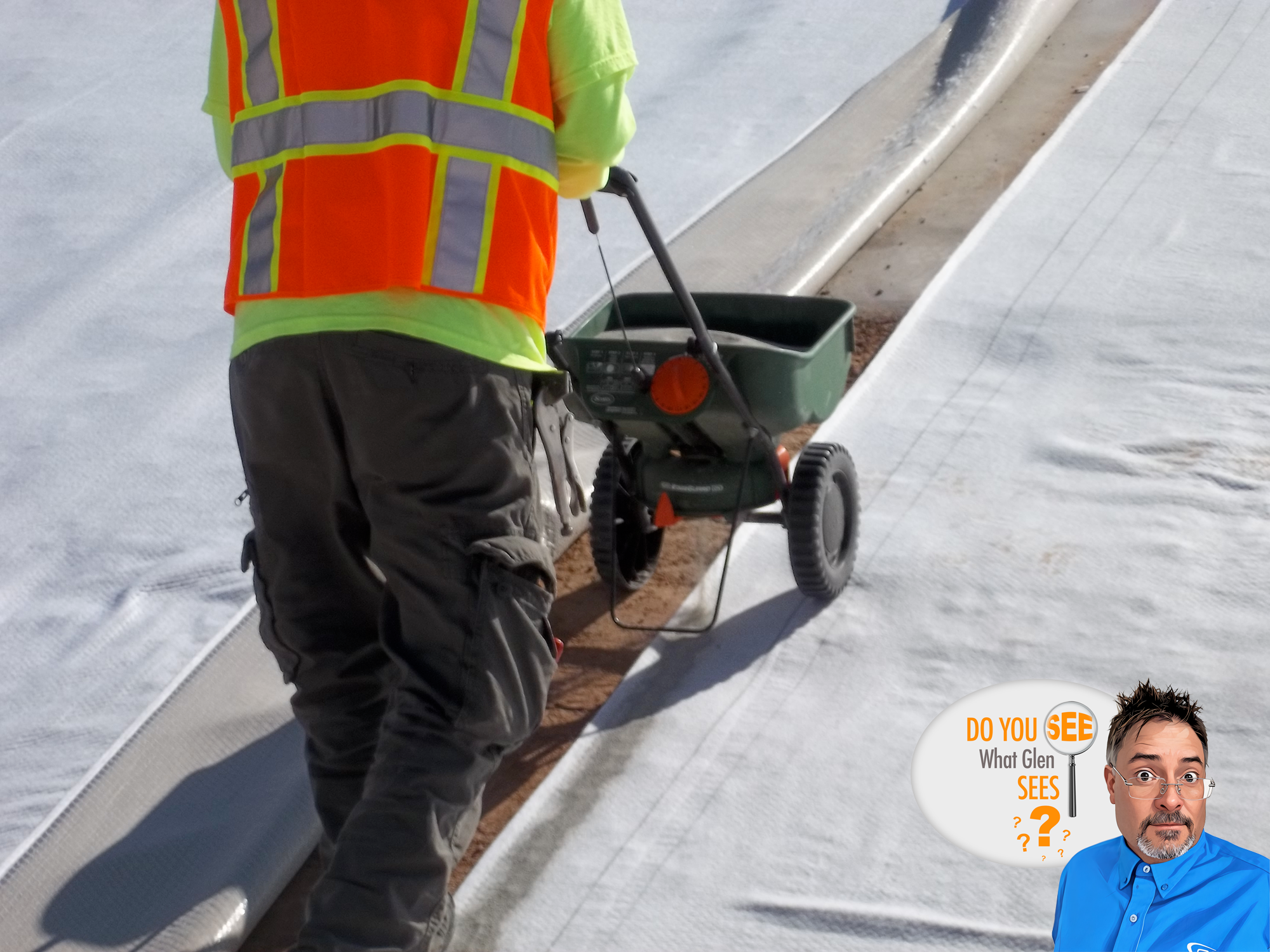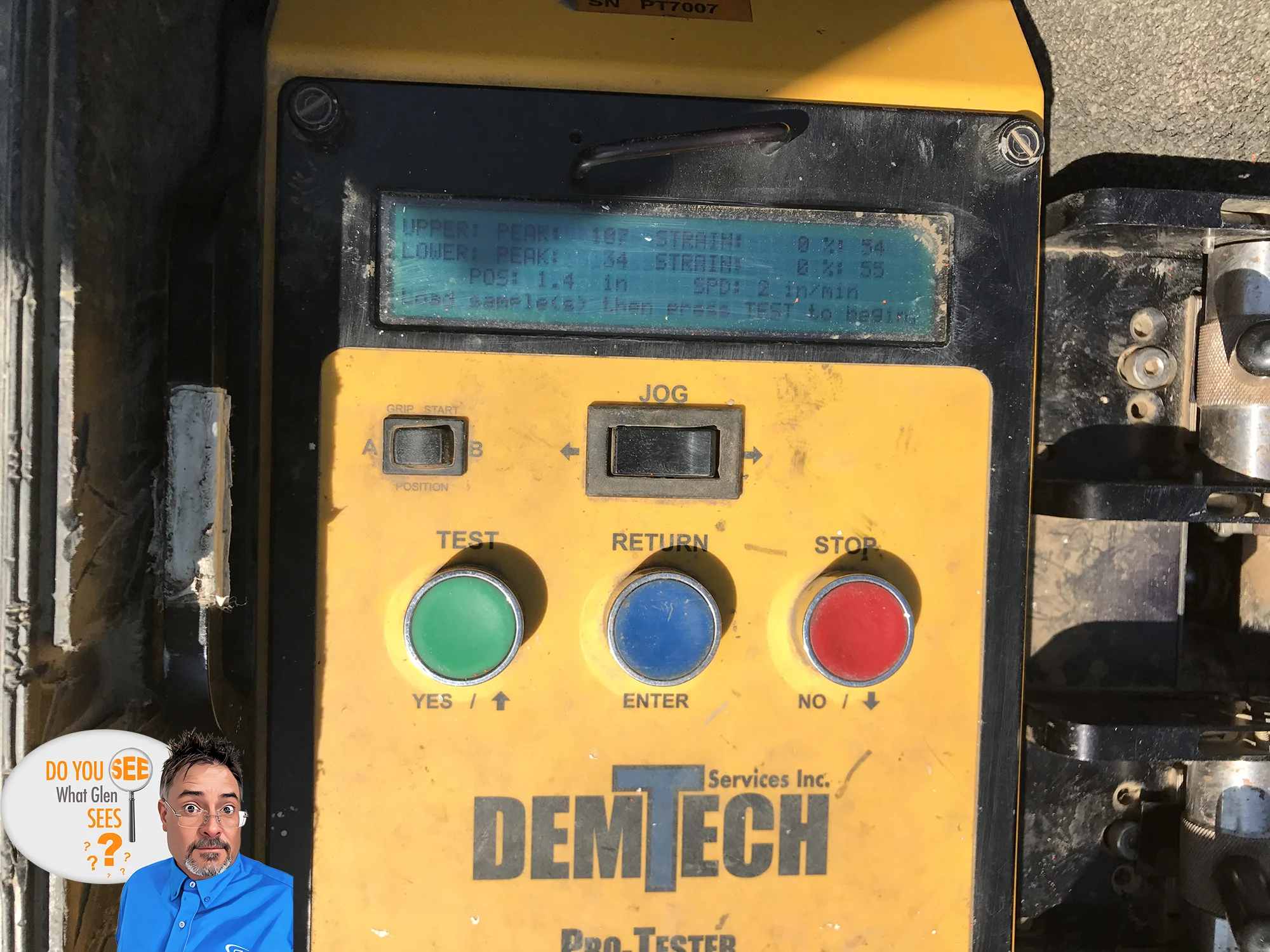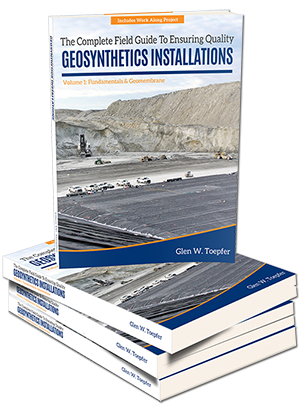First, the answer to Vol. 29 (last week).
Thank you for the great responses this week – you made some great points that I will elaborate on.
First, GCL appears to be in good shape, wrinkle-free, and in intimate contact with the subgrade other than the overlap area which will be folded back.
Second, the application of bentonite in this photo is sufficient to meet the specification of ¼ pound/lineal foot. Prior to the project starting, we weighed different application rates to ensure the installer and CQA team were on the same page as to what met this requirement and what didn’t.
Third, the bentonite application is also uniform/consistent which is something to watch for. It looks like the installer might be stepping in the bentonite, which is something to watch as a footprint will often displace bentonite and those areas then need to be addressed by adding additional bentonite.
Fourth, the bentonite is in the overlap area. Someone mentioned the bentonite should be dispersed throughout the overlap area, but I have never seen this requirement. The requirements I am familiar with often refer to a continuous application at the specified rate of ¼ pound/lineal foot. Some installation manuals define where the bead should be located, and even how wide the bead should be within the overlap area, but I haven’t seen any that require dispersion throughout the entire overlap width.
Fifth, as Thomas mentioned, the overlap appeared questionable but was hard to confirm due to the photograph. In this case, the overlap was sufficient when folded back over but I didn’t have an “after” photograph unfortunately.
Sixth, Marcos correctly pointed out that the seam/applied bentonite is exposed to weather elements such as wind until the overlap panel is positioned over the bentonite. I like to make sure every seam is inspected by CQA prior to the installer flipping the overlap back – I also spot check completed seams to make sure they haven’t been disturbed in the overlap process (it happens!) which requires coordination with the installer such that the panel can be flipped back as soon as possible. This is an important consideration not often mentioned and on windy days, dispersed bentonite can become an issue. I’ve seen the overlap flaps blow back and all bentonite blown away. The installer and CQA team need to keep an eye on the weather and adjust accordingly!
In these blog posts, Do You See What Glen Sees, I will present a photograph or short video related to earthwork or geosynthetics construction and have you identify the significance of what you’re seeing.
It could be things being done correctly or incorrectly. Primarily, these will be things that impact quality.
In addition to my blog, I’ll post this content on X and LinkedIn. You can post your response on one of those two.
I’ll give you my thoughts on each photo or video when I post the next installment.
Do you see what I see? Or did you find something I missed? I’m excited to find out!

Here is the next installment. Take a good look. Do You See What Glen Sees?
Well, many of you have joined me for 30 volumes of Do You See What Glen Sees? already, which is hard to believe. Thank you for your continued participation!
Some background information for this photograph: The project is using 60-mil (1.5mm) textured geomembrane which needed to meet the requirements of GRI-GM19a for both trial seams and destructive testing. The photograph is a close-up of resulting values for peel tests performed on a dual-track fusion wedge weld.
Since no other information is available, do the tests pass based solely on values? Why or why not?





